Holiday Fun!
- 27th October 2025
Inspired by some of our visitors through the summer holidays, who were doing a scavenger hunt for the Rebel Badge Club, we have created our own scavenger challenge for children of all ages (aged 1-92) during October Half Term holidays. If you or your family would like to take part, just find some of the items on the list.
Then you can give yourself a pat on the back OR share your finds with us. You are welcome to message us through social media or visit the Explore the Past desk on Level 2 of The Hive.
History of scavenger hunts
Scavenger hunts have ancient origins, evolving from folk and medieval games. They were popularized in the 1920s and 1930s by Elsa Maxwell, a socialite and gossip columnist from New York. She designed hunts for her high-society friends, and the trend spread to universities, groups and societies.
Worcestershire Archives Scavenger Hunt
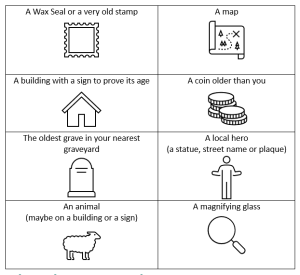
Click here for the printable version: ETP Scavenger Hunt
Here are some tips to help you with your own hunt:
- You could look online for ideas in your local area before you go out for a look around.
- Ask other people you know – parents, siblings, aunts, uncles and grandparents, neighbours. Please don’t talk to strangers!
- Come to the archives or your local library or museum to do a little research: there might be local books or you could check online resources. Have a look on explorethepast.co.uk or the library catalogue at Worcestershire.gov.uk for ideas.
- Take a little trip around your local area to find the items, including a local statue, building with a date on, animal (or animal on a sign) or your local graveyard.
- Don’t forget to take a photo to share with us.
Here is how we got on with this challenge, and some tips for each item:
A wax seal or very old stamp
Explore the Past have many examples of seals on all sorts of legal documents such as deeds, agreements and charters. The most interesting are in our display cases which customers get to see during a guided tour. Some are listed on our online catalogue, and there is a blog post by one of our colleagues about some of her favourite ones. Have a look at explorethepast.co.uk./latest news
If you can’t find a wax seal at home or on your travels try looking instead for an old stamp, on old documents, letters or postcards or in someone’s collection.
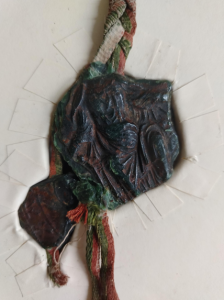
This is from the oldest Worcester charter dated to 1189. From the Worcester City collection.
A map
Maps are always interesting to look at and Explore the Past have many maps from all different periods. If you pop into the Hive, you can have a look at some beautiful maps on our touch table on level 2. We have old Ordnance Survey maps on microfilm, tithe maps and enclosure maps on CD. You might even search for an historic map in our archives or look in a local guidebook or directory on the shelves to see an old street plan.
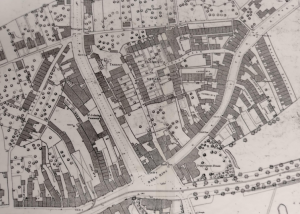
Crown copyright
A building with a sign on to prove how old it is
This is trickier than it seems. There are lots of old pubs and buildings in Worcester, but not all have a date on them. So, keep searching and the best of luck!
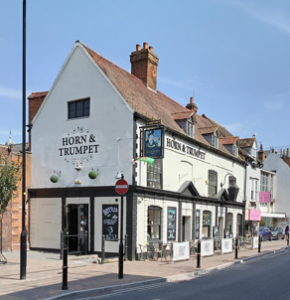
A photograph of The Horn and Trumpet pub taken by Sarah Dentith.
On this pub the date 1646 appears but it has only been in its existing location since about 1800.
A coin older than you
Coins show the date they were minted, so it should be easy enough to search through your pocket change. If you don’t have any old coins in your pockets, do your parents have some they could show you? Perhaps they even collect old coins?
Take a look at our Touch Table on level 2 of The Hive that shows images of Roman coins found in the Worcestershire Conquest Hoard.
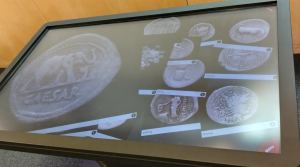
The oldest grave in your nearest graveyard
We have monumental inscriptions (books) recording what is written on gravestones in some Worcestershire graveyards. These are in the Self-Service area on level 2 of The Hive. Otherwise, you will need to make a trip to your local graveyard.
At the Hive, we have access to local newspapers online and we found an article on the 150th anniversary of Astwood Cemetery in 2008. The first burial there was in 1858 and it was for John Ryan, a baby boy just 6 weeks old. We didn’t manage to find an image of the grave but perhaps you will do better?
A local hero (a statue, street name or plaque)
Just walk down your local High Street and you are likely to spot a statue to a local celebrity or even a street or house that is named after a local hero. Take a look at your local war memorial and you will find the names of many heroes.
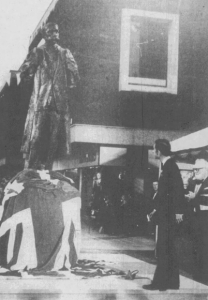
Image courtesy of the Berrows Worcester Journal (Newsquest). It appeared in the newspaper in 1981.
We chose Edward Elgar because we like his music, and he was born locally and lived here for some of his life. There is a lovely statue of him in Worcester’s High Street and here it is being unveiled in 1981 by our now King Charles III.
An animal (maybe on a building or a sign)
You could pick any animal and search the internet to find something local or just wander around and see what you spot. You might prefer to find an animal on a sign (perhaps on a local pub) or a statue or an image on the front of a building or a local mural. You might even find a live animal to photograph, we would love to see those.
Explore the Past hold the Worcestershire Photographic Survey and you can search the database on our website to find any animals mentioned. You can then come to view the photographs on microfilm in the Self-Service area.
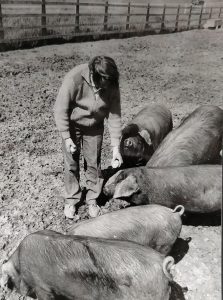
Image courtesy of the Evesham Journal 1986 (Newsquest). Refereence WPS 62833 Beckford.
We picked a photograph of some pigs, because we like pigs!
A magnifying glass
We have some magnifying glasses in the Archive area to help customers look more closely at documents. You might find one at home or in a shop or even find something that does the same job as a magnifying glass but is a little different. Let us know what you discover and perhaps even what you use it to look at.
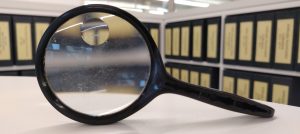
What’s next?
We would really like to know how you get on.
Post photographs on social media or come and visit us and claim a sticker.
Explore the Past is open:
Monday, Tuesday, Thursday, Friday, Saturday 10-4
Wednesday 1.30-7,
With thanks to:
The Rebel Badge Club for the inspiration for this blog.
Newspapers.com
Historicengland.org.uk
Post a Comment